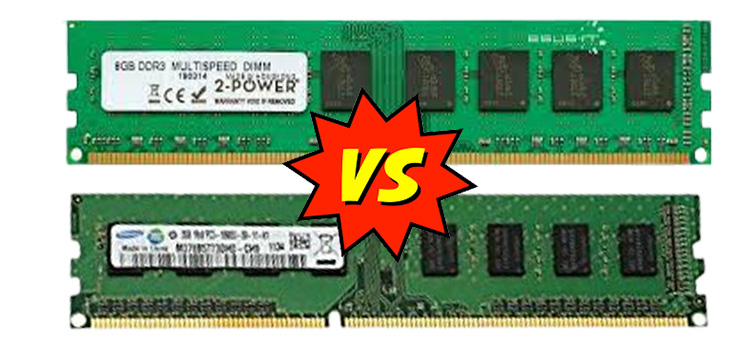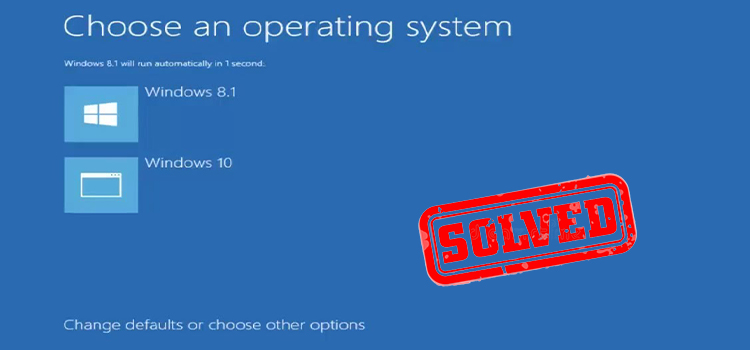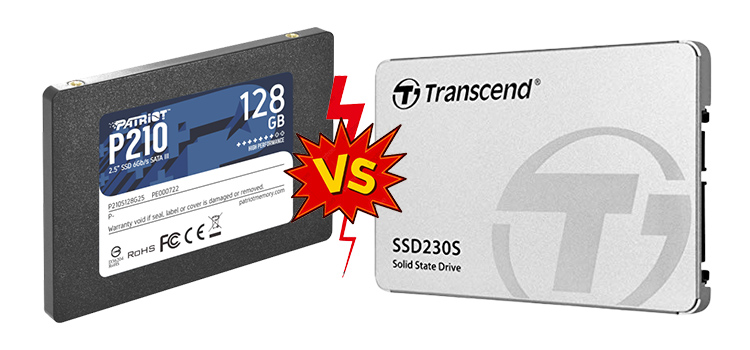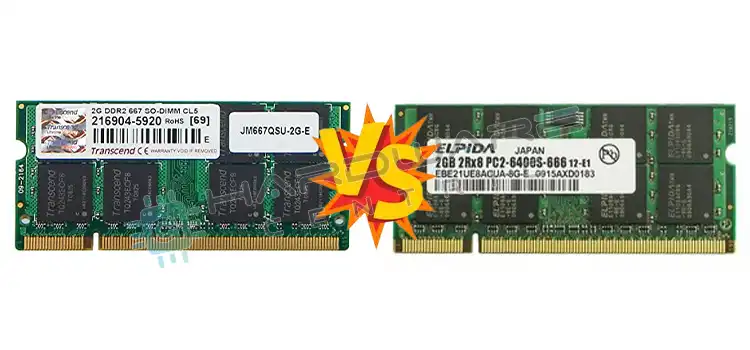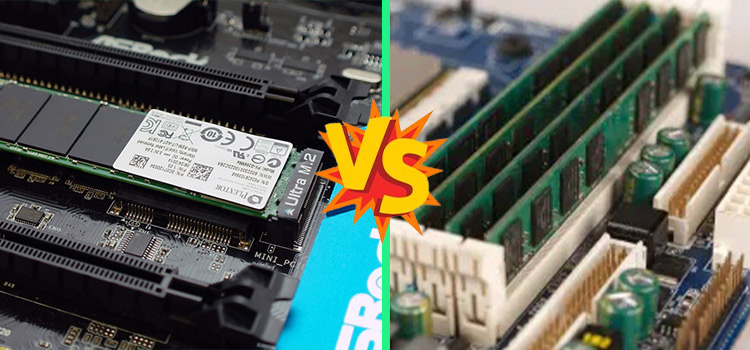1333 MHz Vs 1600 MHz 8 GB DDR3 RAM | Comparison Between Them
In everyday games and apps, the performance gap is generally under 3% between 1333 MHz and 1600 MHz 8 GB DDR3 RAM. The most noticeable differences emerge in memory-heavy tasks, specific memory benchmarks, and when gaming with integrated graphics. Other than that, there are no significant differences between them.
So, depending on your capability, you can use any one of these. Let’s see the comparison below.
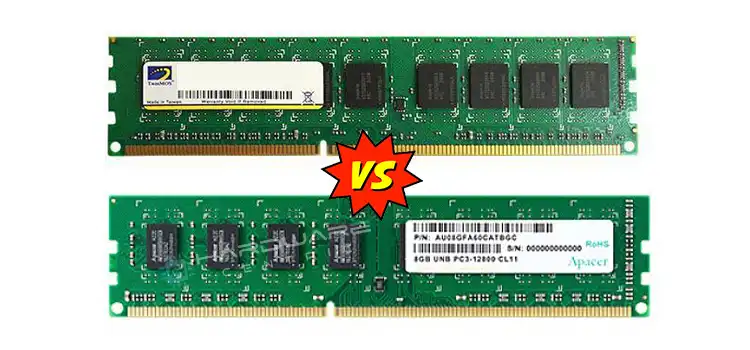
Difference Between 1333 MHz and 1600 MHz 8 GB DDR3 RAM
The higher-frequency memory will have a higher peak bandwidth, no doubt. The lower frequency memory will have lower latency if it has sufficiently faster timings.
1600 is the better one between the 1600 MHz and the 1333 MHz 8 GB DDR3 RAMs. Nevertheless, if you have to buy one of the two 8GB DDR3 RAMs, you should buy it over 1333 MHz if the price is almost the same.
Let’s see some scenarios.

1. Speed of the RAMs
The CPU asks the RAM for some data, and when that happens, the RAM becomes the bottleneck. Therefore, faster RAM means better performance. However, in this case, both CPU and memory controllers get their clock speed from the base clock. Hence, CPU frequency has nothing to do with RAM speed because they are entirely independent of one another.
Therefore, you will not notice any major differences in terms of speed between the 1600 MHz and the 1333 MHz 8 GB DDR3 RAM. However, you may notice, that 1600 MHz is faster than 1333MHz if you are a heavy computer user or you have heavy software to run.
2. Performance of the RAMs
You will see a maximum of 1-3% difference in benchmarks. Nevertheless, there is a difference in performance depending on what you are doing. Therefore, gaming is one of the things that get the most impact.
3. Memory Capacity of the RAMs
DDR3 1333 vs 1600 When it comes to how much memory your storage can handle, there isn’t a big difference between DDR3 1333 and DDR3 1600. While DDR3 allows for memory chips with a max capacity of 8 gigabits, it can only increase DRAM densities up to 8 gigabits. With four memory ranks of 64 bits, each DDR3 DIMM can reach a maximum capacity of 16 gigabits.
4. CAS Latency of the RAMs
In terms of speed, 1600 MHz is faster than 1333 MHz. So, DDR3 1333 comes out as the better performer here. DDR3 1333’s CAS Latency of 7-7-7-21 is faster than DDR3 1600’s CAS latency of 9-9-9-28, which is why it performs better.
5. Gaming with the RAMs
For gaming purposes, frequencies do not matter. It matters with RAM size. Although, 8GBb RAM is fine for gaming. If you have not bought any RAM yet, you can ignore 1333MHz and buy 8GB RAM with 1600MHz
However, 1600 MHz is the least fast RAM you will need for gaming. You can only feel the difference from 1333 MHz if you are a heavy user. Otherwise, you will not notice any differences.
6. Receiving Data per Second
The processor tells the chipset that it can receive data from the RAM 1600 times per second if it is 1600MHz. Similarly, it will receive 1333 times if it is 1333MHz.
7. Application of the RAMs
DDR3 1333 and DDR3 1600 both run at 1.5 volts, meaning they generate the same amount of heat and use similar power ranges. As a result, they have a similar impact on the durability of your chips and motherboard, so you can’t easily tell them apart based on how long they’ll last.
If you’re looking to enhance everyday performance and experience small yet noticeable improvements, opting for DDR3 1333 with lower latency is the way to go.
On the other hand, if you’re involved in tasks like editing, graphic design, or intricate work, DDR3 1600 is the better choice. For more demanding tasks like 3D rendering and advanced features, the extra clock speed and bandwidth of DDR3 1600 make it a more suitable option compared to DDR3 1333.
8. Price of the RAMs
There is no visible price difference between the two RAMs. It mainly depends on the country or state’s market price. However, depending on the online shops and the store shops, the prices can be a little different.
Here is a difference table comparing 1333 MHz and 1600 MHz 8 GB DDR3 RAM:
| Feature | 1333 MHz DDR3 | 1600 MHz DDR3 |
| Speed | 1333 MHz | 1600 MHz |
| Latency (CL) | 9/9/2009 | 11/11/2011 |
| Bandwidth | 10.6 GB/s | 12.8 GB/s |
| Capacity | 8 GB | 8 GB |
| Compatibility | DDR3 only | DDR3 only |
| Performance | Moderate | Higher |
| Cost | Lower | Higher |
In general, a higher frequency DDR3 RAM will result in better performance compared to a lower frequency DDR3 RAM with the same capacity and latency. The 1600 MHz DDR3 RAM offers improved performance compared to the 1333 MHz DDR3 RAM due to its higher frequency and bandwidth, but it also comes at a higher cost. The choice between these two options will depend on your budget and performance requirements.
Conclusion
Although faster speed RAM should help you achieve better overclocks too as you have more room to play with. However, after replacing it with the highest frequency, you will not find any differences in performance.
If you do not have any of the 1333MHz and 1600MHz 8GB RAM, you can buy any of these. If you have either of them, it is not necessary to buy another one.
Subscribe to our newsletter
& plug into
the world of PC Hardwares
